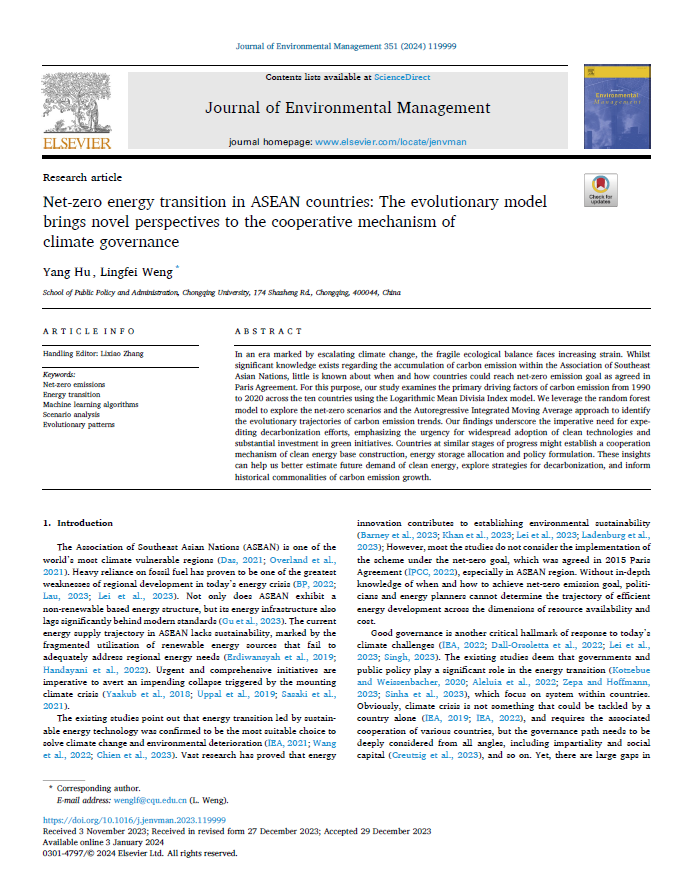
Keyword(s)
Author(s)
Yang Hu, Lingfei Weng
Country(ies)
Publisher
Published Date
Access
DOI
School of Public Policy and Administration, Chongqing University, 174 Shazheng Rd., Chongqing, 400044, China
In an era marked by escalating climate change, the fragile ecological balance faces increasing strain. Whilst significant knowledge exists regarding the accumulation of carbon emission within the Association of Southeast Asian Nations, little is known about when and how countries could reach net-zero emission goal as agreed in Paris Agreement. For this purpose, our study examines the primary driving factors of carbon emission from 1990 to 2020 across the ten countries using the Logarithmic Mean Divisia Index model. We leverage the random forest model to explore the net-zero scenarios and the Autoregressive Integrated Moving Average approach to identify the evolutionary trajectories of carbon emission trends. Our findings underscore the imperative need for expediting decarbonization efforts, emphasizing the urgency for widespread adoption of clean technologies and substantial investment in green initiatives. Countries at similar stages of progress might establish a cooperation mechanism of clean energy base construction, energy storage allocation and policy formulation. These insights can help us better estimate future demand of clean energy, explore strategies for decarbonization, and inform historical commonalities of carbon emission growth.